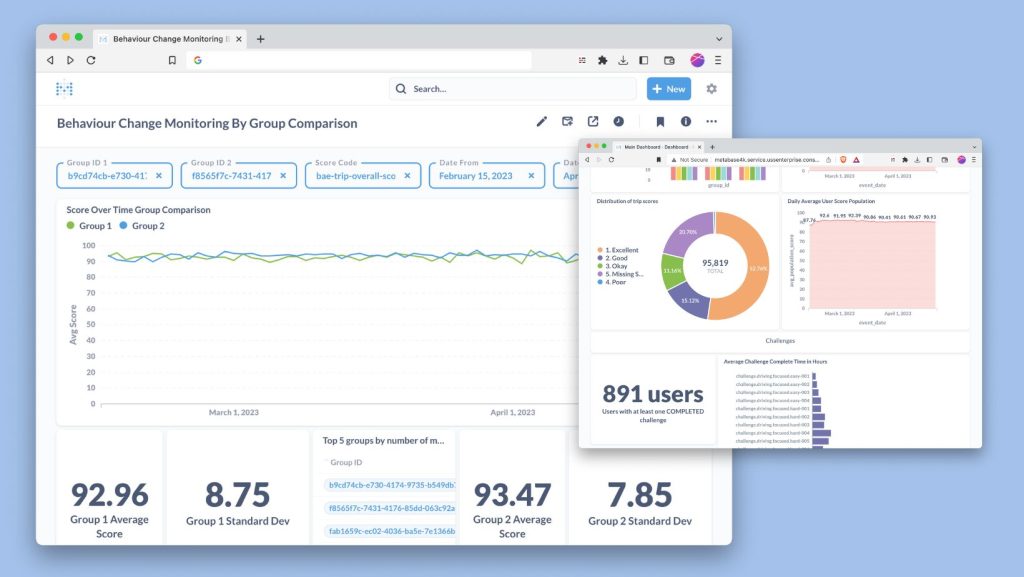Building an application to reduce distracted driving

Introduction
Developing any mobile application that achieves success comes with its own set of unique challenges. While the development phase may be the easiest to plan and carry out, other aspects need to be considered, especially when creating a mobile app aimed at changing user behavior e.g. reducing distracted driving.
At Sentiance, we specialize in providing technology solutions that offer detailed insights into driving behavior, as well as digital coaching and application engagement programs. This blog post aims to cover some of the most critical topics that are essential for running such a successful mobile app. If your company is building a product around reducing distracted driving, or if you are generally interested in the topic, this is definitely for you.
After analyzing our customers’ approaches to mobile app and product design, we’ve identified four main categories that encompass the various topics and ideas involved:

Let’s take a closer look at each of these categories to understand how they contribute to your mobile app success.
The concept
Undoubtedly, the most crucial aspect that requires absolute clarity among the entire product team is understanding the application’s purpose, the desired user interaction, and how well the application aligns with the concept. Although the concept may not be set in stone initially, it must become more defined by the end of the development phase and marketing campaigns.
Imagine having a feature in your app that motivates you to improve your driving behavior by presenting fun challenges that get increasingly more difficult as you succeed. Apart from the fun challenges, what are the complementing app flows? Will it improve your driving score? Will you earn badges? Will you be recognized within your group or circle? These are critical questions to answer because they determine whether you’ll keep using the app or not.
Our Engagement product development kit. This kit not only accelerates your digital coaching workflow development but is also based on our Driving Insights platform. This means you get the best of both worlds with a technology provider that offers driving insights and a product development kit for digital coaching features. With our help, you can build the ultimate driving app that will engage and motivate users to improve their driving skills.
When it comes to creating a top-notch application, it’s crucial that everyone involved – from product and engineering to marketing – is on the same page and shares a fundamental understanding of the concept.
Technology choices
Gone are the days when application development meant primarily deciding on which database or infrastructure provider to use. Nowadays, it’s also about choosing the right technology and product providers – think SaaS providers and development kits – to take your app development to the next level. Not only does this result in faster delivery times, but it also ensures that your app is built using the latest technical practices.
1) Technology provider: So, the engineering team is clear on the app concept: it’s all about helping users improve their driving behavior. And to make that happen, they need to be able to access the user’s driving insights, which is where the choice of technology provider comes in. It’s like picking the perfect tool for the job – selecting the right technology provider is the first step in building effective digital coaching workflows that will help users become better drivers.
2) Product development kit: To create effective workflows for a mobile application, developers should adhere to best practices while utilizing existing workflow solutions. This approach allows them to concentrate on enhancing the app experience rather than developing domain-specific workflows such as driving challenges, driving scores, and streaks.
Sentiance’s Engagement Platform is a product development kit designed to help app developers create digital coaching and engagement workflows within their applications. By leveraging this platform, developers can streamline the process of building these workflows and focus on delivering a top-notch user experience.
3) App development kit: Engineering leads have the decision to make regarding whether they should opt for an app development kit that covers common app requirements such as push notifications, user authentication, analytics, etc., or develop these functionalities from scratch. Popular app development kits for this purpose include Firebase and Supabase.
4) Mobile development and supporting middleware: At times, these technical decisions can be simple, for instance, determining whether the application will cater to both iOS and Android users. Should the engineering team maintain two native code bases or opt for a hybrid solution like Reactnative or Flutter? Another aspect that requires consideration is selecting the appropriate application backend database, and so on.
Measuring change in user behavior
Most product teams have standard practices for measuring application usage. However, for an app that mainly emphasizes digital coaching, it is essential to possess the necessary instruments to measure whether users are improving their behavior while interacting with the app. In our case, we could redefine this criterion as “Do users demonstrate better driving behavior with increased usage of the application?”
Although the question may appear uncomplicated, in actuality, it could be quite intricate to address. And such metrics are lag indicators and typically require the examination of multiple other metrics (lead indicators) collectively. To illustrate, some of the metrics that could help arrive at an answer include:
- Are users accepting driving challenges?
- Do users attempt a challenge again after failing?
- Do users click on “know more” when they receive a low driving score?
- Is there a gradual improvement in driving score over time?
To enable access to these metrics, a reliable technology provider and product development kit are crucial. Sentiance’s Insights Control Tower (ICT infographic) precisely provides this functionality, as it enables Sentiance customers to log in and monitor dashboards that display the effectiveness and success of their digital coaching campaigns.

Iterate
What might seem the most obvious is sometimes largely neglected. The loop of measuring app usage to designing and developing an improvement and measuring again is extremely important. And it is not just teams and businesses that need to have this mindset, but it can be largely made easier by smart technology choices and coding practices that enable these quicker interactions to be conducted with confidence.
Coming to our example: If we determine that users are not retrying a challenge when failing, we should consider an alternative workflow where the user is presented with other similar challenges.
Conclusion
Developing digital coaching applications to reduce distracted driving can be both thrilling and slightly daunting. Nonetheless, by selecting the appropriate technology collaborator, implementing behavior measurement tools, and having the capacity to receive and rapidly act on user feedback, the obstacles that come with this field can be effectively overcome.
Read how Sentiance and RAC reduce distracted driving by nearly 60%!

